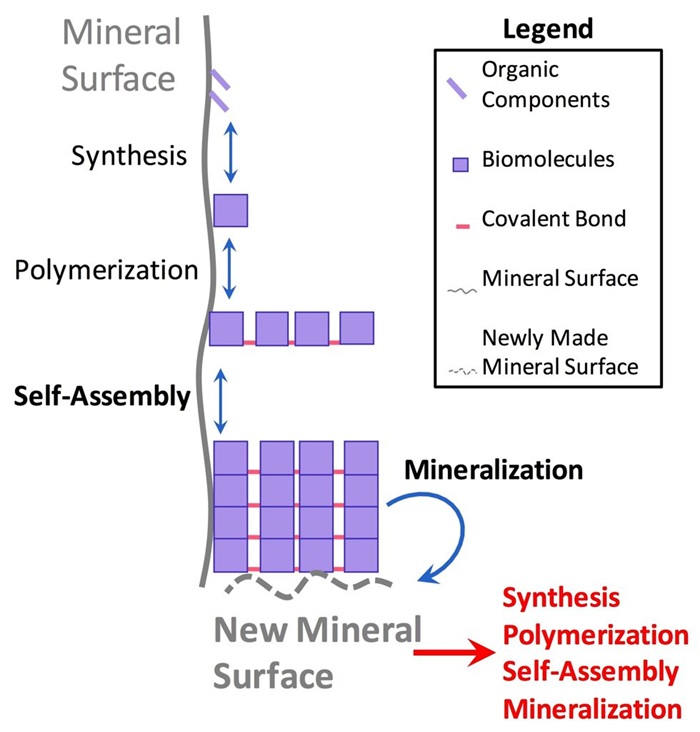Origins of life and astrobiology research has often utilized analytical tools and scientific knowledge from other research fields, including chemistry, biology, geology, planetary science, physics, and many more. For this reason, much of the advancement within our research field has been built upon the technological and theoretical advancement of other fields. Recently, the fields of nanoscience and surface science have made significant progress in technical and theoretical aspects. Additionally, many of the lessons learned from self-assembling systems (and also sometimes the systems themselves) studied in nanoscience are quite relevant to advancement of the knowledge of our own origins. For example, recent work in self-assembling short peptide systems provides a simple prebiotically-plausible molecule which is able to result in very complex architecture without the necessity of the formation of high-energy peptide bonds.
In a recent review article by former EON postdoctoral fellow Dr. Richard J. Gillams, and ELSI researcher Dr. Tony Z. Jia, the authors present various case studies from nanoscience and surface science. Each case study involves a templated self-assembled system induced by a mineral surface, one of the most common interfaces available in the cosmos, and also a likely very important participant in the initial development of early life on Earth. These self-assembling systems templated by mineral surfaces, which include nucleic acid secondary structures, peptide nanofibrils, and simple ordered organic monolayers, may also have been able to contribute to the emergence of functional, structural, and chemical diversity on an early Earth environment. Such self-assembling systems are also known to play a role in biomineralization processes, a mechanism by which organisms can produce minerals (such as teeth, bones, shells, etc.) for its own use.
The authors envision a model by which mineral surfaces on primitive Earth catalyzed the synthesis and/or adsorption of simple biomolecules (such as nucleotides), polymerization of monomers into polymers (such as peptides or nucleic acids), and eventual self-assembly (such as in peptide amyloid structures) of these molecules into supramolecular structures. These supramolecular self-assemblies could then have catalyzed the formation of new mineral surfaces, resulting in a circular autocatalytic cycle. It is very clear that the geology of our planet was affected directly by various non-living chemical processes while the Earth-life system was moving beyond primitive chemistries and into a living system early in its history, resulting in an interactive and symbiotic feedback loop in which geology and early pre-living systems were closely linked to one another even before life's origin. The authors hope that through these various case studies of mineral-templated self-assemblies, researchers in the origins of life and astrobiology fields see the merit of incorporating ideas from the fields of nanoscience and surface science into their own research.

Synergistic cyclical model of mineral-templated self-assembling systems promoting mineralization.
| Journal | Life 2018, 8(2), 10 |
| Title of original paper | Mineral Surface-Templated Self-Assembling Systems: Case Studies from Nanoscience and Surface Science towards Origins of Life Research |
| Authors | Richard J. Gillams1,2, Tony Z. Jia1,* |
| Affiliations | 1 Earth-Life Science Institute, Tokyo Institute of Technology 2 Structural Genomics Consortium, Nuffield Department of Medicine, University of Oxford |
| DOI | 10.3390/life8020010 |
| Online published date | May 8, 2018 |
